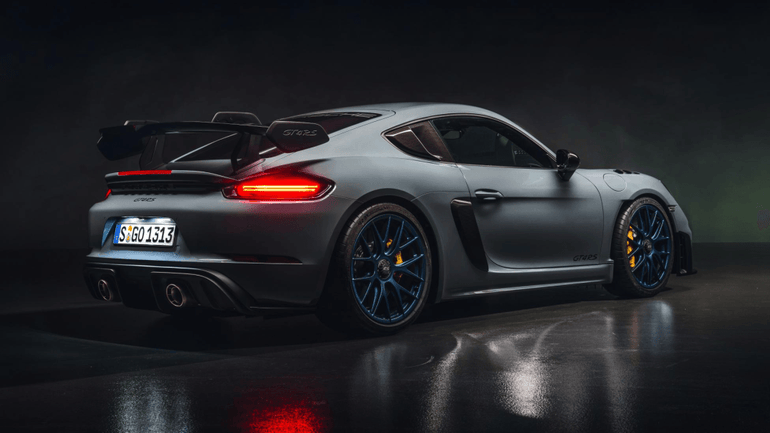Most licensed drivers have experiences with a naturally aspirated engine at least during their learning days —but probably most people didn’t pay attention.
This oldest, most primitive, and simplest type of engine has been around for more than a hundred years. Whether it was during the oil crisis in the 1970s, or the trend of new energy today, normally aspirated engines continue to stay in the history of cars.
As today in 2022, there are still car manufacturing giants that are putting efforts on normally aspirated engines.
Porsche just brought us the best performance of the 718 series, with the 4.0L normally aspirated engine on the 911 GT3; Ferrari's latest limited model, the Daytona SP3, uses V12 normally aspirated engines; Toyota and Subaru continue to cooperate for the new generation of the 86/BRZ, insisting on normally aspirated engines and increase the displacement from 2.0L to 2.4L against the trend of turbo.
The normally aspirated engine, as the name implies, the air required for combustion inside the engine is naturally "pushed" into the cylinder by atmospheric pressure without any other assistance. At the beginning of the engine, this was the only way, and later, engineers came up with various other ideas for supercharging to increase the intake air volume.
For normally aspirated engines, and for the past when supercharging was not common, the air intake system was critical to the performance of an engine.
For the normally aspirated engine that pursues the ultimate performance, the variable air intake system is a must-have weapon against the supercharged engines.

When the engine is running under different working conditions, the characteristics of the air it needs to be taken in are different: at low speed, it needs to be sufficient and long-time lasting; while at high speed, it needs to be fast and powerful. In the conventional fixed air intake system, the internal air intake pipeline is naturally fixed, which is a contradiction.
An engine with complete performance should have good performance under various working conditions. If the intake system is immutable, the performance won;t be good under some conditions, the engineer must make a decision to make a balanced design. In many cases, car design is a trade-off between "improving the limit" and "guaranteeing the process", so the real improvement of the limit often relies on the "liberation" of other constraints by new technologies.
The technologies such as CVVT, VVT, and VVL that were often heard in the earlier years are the variable improvements to the valve mechanism such as the camshaft, which are limited to the intake valve and exhaust valve above the cylinder. These technologies have become popular today (and are not limited to self-priming), and for self-priming engines with higher pursuits, it is necessary to make a big move, variable intake manifold.
 Porsche uses a variable intake manifold with multiple resonant valves right in its normally aspirated engine. Under preset working conditions, through the combination of opening and closing valves, the path for air to enter the cylinder can be selected and changed in various ways. At low rpm, air travels a longer distance to the cylinder, and when high rpm requires more air, adjust the valve to use a short intake path.
Porsche uses a variable intake manifold with multiple resonant valves right in its normally aspirated engine. Under preset working conditions, through the combination of opening and closing valves, the path for air to enter the cylinder can be selected and changed in various ways. At low rpm, air travels a longer distance to the cylinder, and when high rpm requires more air, adjust the valve to use a short intake path.
The variable intake manifold allows the engine to have a more comprehensive torque output in a wider speed range, which is the so-called "improved torque curve". Since the maximum power of the engine is related to the torque at high speeds, the limit output is indirectly increased. In fact, many "variables" in the engine are to achieve "consideration", because the other side of "consideration" is always to allow "higher" to be "higher".

Ferrari is also a big fan of variable intake manifolds. The bright red "box" above the engine is a complex intake system. The internal moving structure can change the aspect ratio of the intake manifold, helping to shorten the intake manifold at high revs and vice versa at low revs. Such variable air intake enables the normally aspirated engine to have high output in the speed range of nearly 10,000 revolutions, and make full use of the high speed to increase the power limit.
The 5.5L normally aspirated LT6 engine carried by the Chevrolet Corvette Z06 is equipped with a pressure regulator chamber for each of the two rows of cylinders, and three valves are arranged in the middle, which can also be combined with the fluctuation effect generated by the intake and exhaust of each cylinder. to the efficacy of the variable intake manifold.

The measures to improve the intake efficiency of the normally aspirated engine are also reflected in the application of the ITB independent throttle valve.
Most widely used vehicles only have one throttle valve, which is also the "accelerator" we talk about every day, which directly controls the power output of the vehicle. But a throttle valve controls multiple cylinders, which means it must be far from the valve port. The distance between them is such that there is a time lag for the air to reach the cylinder when the accelerator is depressed quickly.
The solution is simple: putting individual throttles on each cylinder. Every command of the throttle is directly sent to the cylinder door, and the distance between the throttle and the valve can no longer be relied on.

The sound the engine makes is very different between a normally aspirated engine and a turbocharged engine, because the turbocharged engine has a supercharger compressor on the intake path, and the engine noise is no longer easily transmitted from the intake side, as you will find today. Turbo cars put more emphasis on the so-called "shooting sound" of the exhaust.


Who is better between turbo and normally aspirated engines is a century-old debate in the automotive world. Small-displacement turbos are all over the market today and gave the answer, but the arrival of the era of electric cars makes this answer become meaningless again.
However, whether it is the entire fuel vehicle or the normally aspirated engine, it still has its irreplaceable characteristics and advantages. For some performance machines focused on driving, there is no substitute for the quick power response of a self-priming engine. Hybrid and electrification can bring similar results, but at a higher weight cost.
Even if there is no possibility of becoming mainstream, there are still interests, driving the normally aspirated engine to continue to develop.








